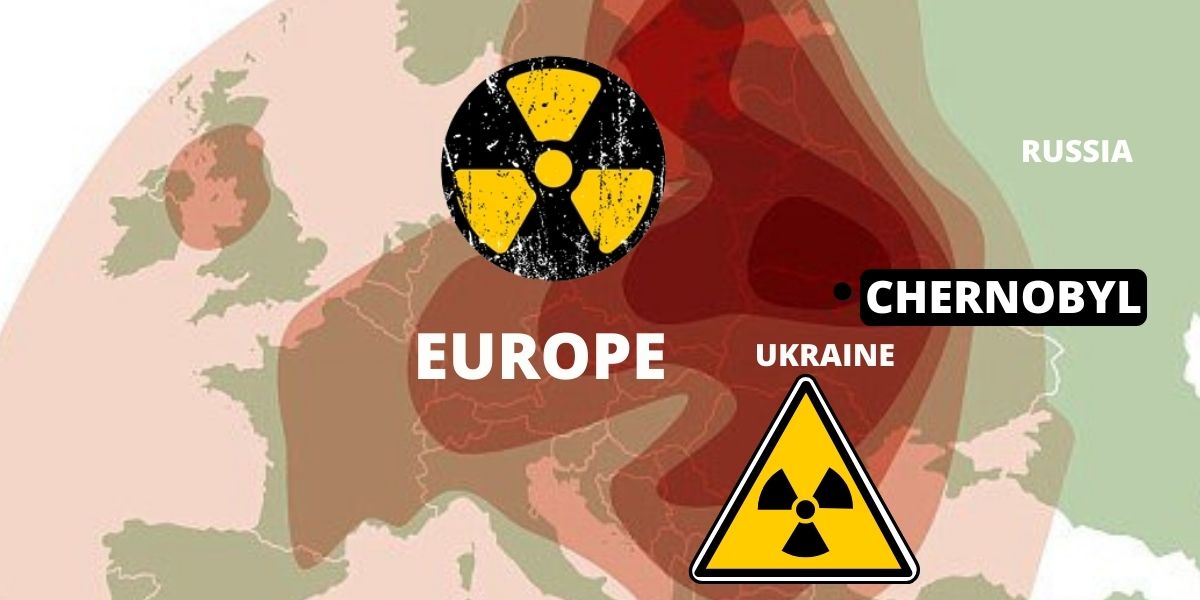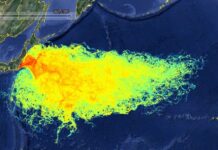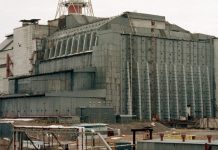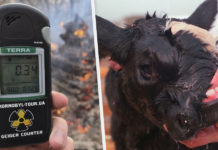Image: Map showing how a cloud of radiation engulfed Europe, during the 1986 Chernobyl disaster.
- The Chernobyl nuclear complex has been cut off from the power grid in the course of the fighting in Ukraine.
- Therefore, it was initially feared that radioactive substances could be released into the environment.
- But an expert gives the all-clear: Chernobyl has an emergency power supply – and even without electricity there is no acute danger.
After the former Chernobyl nuclear power plant in Ukraine, currently occupied by Russian troops, was cut off from the power grid, uncertainty prevails. According to the Ukrainian grid operator Ukrenerho, power lines were damaged by shelling on Wednesday. The Ukrainian state-owned nuclear energy company Energoatom fears that the power failure could lead to the spent nuclear fuel no longer being cooled – and that radioactive substances could therefore be released into the environment.

For The Time Being
Emergency diesel generators guarantee power supply for the time being.
According to the assessment of safety expert Sven Dokter from the Gesellschaft für Anlagen- und Reaktorsicherheit (GRS), however, there is currently “no cause for major concern”: “In the event that the power supply fails, there are two permanently installed emergency power diesels on site that switch on automatically. And even if they are defective, there are mobile diesel generators,” he told RedaktionsNetzwerk Deutschland (RND) on Wednesday. The Ukrainian side has also confirmed that they have diesel supplies for 48 hours.
But what if the power supply is no longer guaranteed? Even in this case, according to the expert, there is no risk of major releases of radioactive substances into the environment. That’s because the reactors in the units were shut down a long time ago, the last one in 2000, he said. “That means there has been no nuclear fuel in any of the units for a long time – there’s nothing left to cool,” Dokter said.
Shelter in Chernobyl needs electricity for radiation monitoring and ventilation
One of the purposes of the power supply in the ruined nuclear facility is to keep the functions of the shelter, built in 2018, intact. It replaced the previous sarcophagus, which was unstable and leaking at times, and is designed to prevent contaminated dust from entering the environment when parts of the former nuclear plant are demolished.
“The shelter, called the ‘New Safe Confinement,’ has many facilities that need electricity – for example, they have radiation monitoring and ventilation,” Dokter said. But even without power, he said, there is no acute safety threat. “Even if, for example, the ventilation fails, it does not mean that radioactive substances will be released into the environment – thanks to the shelter, even then the situation is better than before 2018″, the expert emphasized.
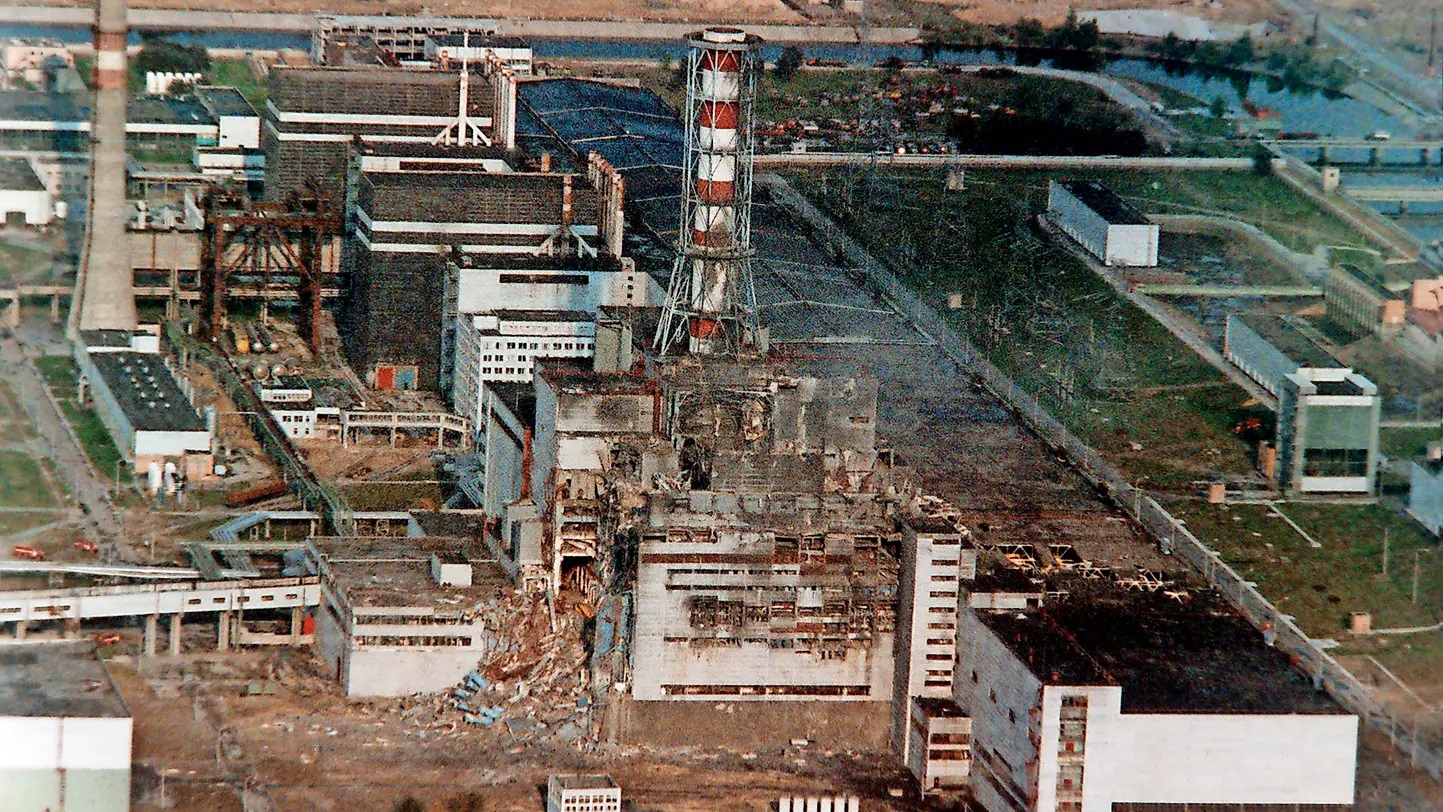
Fuel elements at Chernobyl decay for at least 20 years
The electricity is also used to keep the ISF-1 interim storage facility in operation. “In the ISF-1 wet storage facility, there are several pools containing the spent fuel elements from the earlier operation of the four units. They are standing there in water, which has two functions: First, it serves to cool the fuel assemblies, and second, the water shields the strong radiation,” Dokter said.
In intact nuclear power plants, a lack of electricity could cause problems here. That’s because if the pool evaporates, the fuel elements could heat up considerably and break down, releasing radioactive materials into the environment. This was a major concern during the Fukushima nuclear disaster in 2011, among others, because a pool was damaged.
The difference between Chernobyl and the case at Fukushima, however, according to Dokter, is that the fuel assemblies at the Super-GAU eleven years ago were fresh, whereas at Chernobyl they are old. “The fuel assemblies in Chernobyl have been there for at least 20 years, most of them for much longer. Therefore, the post-decay power has decayed to such an extent that they hardly produce any heat and would not be damaged even without cooling,” emphasizes the GRS safety expert.
Even if the complete emergency power supply were to fail – for which there is no evidence – it would take at least several weeks for the water to evaporate from these pools, Dokter says. So there would still be plenty of time to restore power in time. “Without water, though, you wouldn’t be able to stand next to the pools and work there because of the high radiation. Then you would have to figure out how to get the water back into the pools,” Dokter said.
Ukrainian energy minister: radiation exposure not known because of Russian occupation
The International Atomic Energy Agency (IAEA) also sees “no critical impact on safety in this case,” it said in a tweet. The heat capacities of the spent fuel pool and the volume of the cooling water were sufficient for effective heat removal even without electricity.
#Ukraine has informed IAEA of power loss at #Chornobyl Nuclear Power Plant, @rafaelmgrossi says development violates key safety pillar on ensuring uninterrupted power supply; in this case IAEA sees no critical impact on safety.
— IAEA – International Atomic Energy Agency (@iaeaorg) March 9, 2022
However, the Russian occupation of the former nuclear power plant is a cause for concern. Russian troops captured Chernobyl on February 24. For this reason, authorities in Ukraine are unaware of the current radiation levels at Chernobyl, Ukrainian Energy Minister Herman Halushchenko said Wednesday. The IAEA had previously sounded the alarm that the nuclear plant was becoming increasingly cut off from the outside world.
